Themed collection SIMS for Biological Applications

Secondary Ion Mass Spectrometry for Biological Applications
Dirk Schaumlöffel introduces the JAAS themed collection on Secondary Ion Mass Spectrometry for Biological Applications.

J. Anal. At. Spectrom., 2020,35, 1045-1046
https://doi.org/10.1039/D0JA90020F
A concise tutorial review of TOF-SIMS based molecular and cellular imaging
This concise tutorial review provides a description of the current state of the art in the application of time-of flight based secondary ion mass spectrometry (TOF-SIMS) in the field of molecular and cellular imaging.
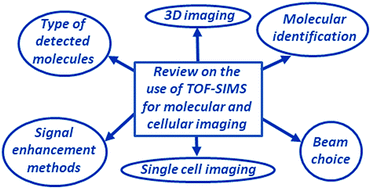
J. Anal. At. Spectrom., 2019,34, 2217-2228
https://doi.org/10.1039/C9JA00164F
SIMS imaging in neurobiology and cell biology
Secondary ion mass spectrometry (SIMS) has been increasingly recognized as a powerful technique for visualizing molecular architectures in the fields of neurobiology and cell biology.
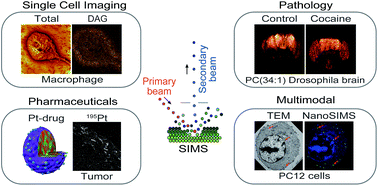
J. Anal. At. Spectrom., 2019,34, 1355-1368
https://doi.org/10.1039/C9JA00118B
Biological explorations with nanoscale secondary ion mass spectrometry
Investigation of biological processes at the single cell or subcellular level with methods such as NanoSIMS is critical in order to better understand heterogeneous cell populations.
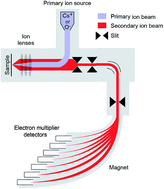
J. Anal. At. Spectrom., 2019,34, 1534-1545
https://doi.org/10.1039/C9JA00171A
Fluorinated nanobodies for targeted molecular imaging of biological samples using nanoscale secondary ion mass spectrometry
Specific labeling of cellular proteins with fluorinated nanobodies enables their visualization in nanoSIMS.
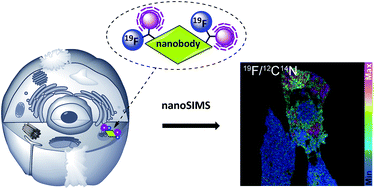
J. Anal. At. Spectrom., 2019,34, 1083-1087
https://doi.org/10.1039/C9JA00117D
Why is NanoSIMS elemental imaging of arsenic in seaweed (Laminaria digitata) important for understanding of arsenic biochemistry in addition to speciation information?
Brown seaweed such as Laminaria digitata is known to accumulate arsenic at a concentration of more than 100 mg kg−1.
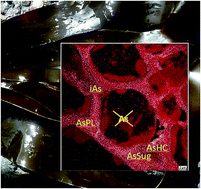
J. Anal. At. Spectrom., 2019,34, 2295-2302
https://doi.org/10.1039/C9JA00187E
Correlative microscopy of freeze-dried cells and studies on intracellular calcium stores with imaging secondary ion mass spectrometry (SIMS)
Secondary ion mass spectrometry (SIMS)-based imaging techniques have become effective tools for studies of elements and molecules in biological samples.
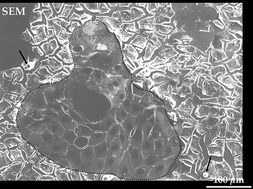
J. Anal. At. Spectrom., 2019,34, 1998-2003
https://doi.org/10.1039/C9JA00193J
Mass spectrometry imaging as a novel approach to measure hippocampal zinc
Mass spectrometry imaging used to measure hippocampal zinc shows complementarity to fluorescence and shows protein-bound rather than free zinc.

J. Anal. At. Spectrom., 2019,34, 1581-1587
https://doi.org/10.1039/C9JA00199A
Identification of nanoparticles and their localization in algal biofilm by 3D-imaging secondary ion mass spectrometry
ToF-SIMS boundaries were pushed to enhance lateral resolution and mass resolving power for chemical imaging of nanoparticles in biological systems.
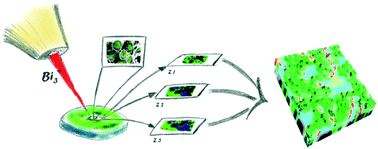
J. Anal. At. Spectrom., 2019,34, 1098-1108
https://doi.org/10.1039/C8JA00439K
Three dimensional secondary ion mass spectrometry imaging (3D-SIMS) of Aedes aegypti ovarian follicles
The mobilization of nutrient reserves into the ovaries of Aedes aegypti mosquitoes after sugar-feeding plays a vital role in the female's reproductive maturation.
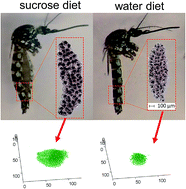
J. Anal. At. Spectrom., 2019,34, 874-883
https://doi.org/10.1039/C8JA00425K
About this collection
This is a collection of papers consisting of invited contributions dedicated to SIMS for biological applications. The purpose of this collection is to highlight the most outstanding work in the area of SIMS, and also to provide some insight into the newly emerging work in this exciting area of research. Guest Edited by Dirk Schaumlöffel. New articles will be added to this collection as they are published.